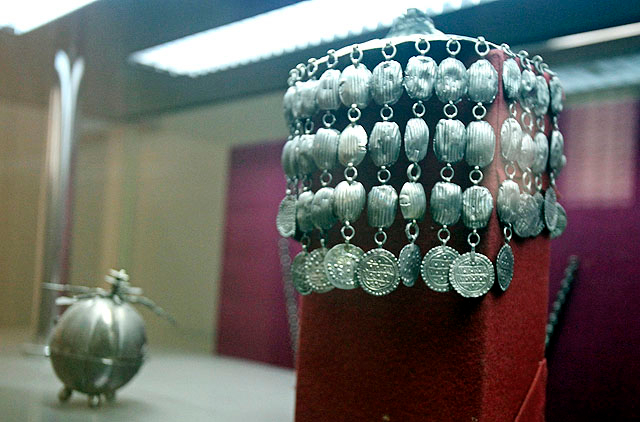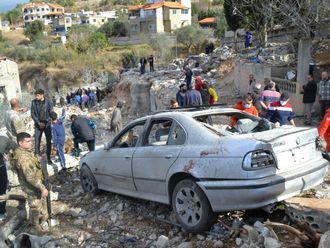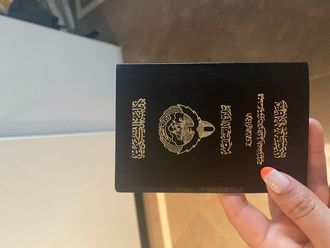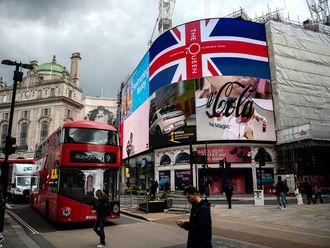
Dubai: It was a happy moment for Iraq but an embarrassing one for Iraq's current caretaker Prime Minister Nouri Al Maliki, when 634 artefacts were found stashed in his warehouse.
Sources who spoke to Gulf News on condition of anonymity said the boxes filled with priceless pieces of Iraq's history were left next to boxes containing supplies in Al Maliki's office kitchen.
Last year, General David Petraeus, commander of US Centcom, despatched a military plane to fly over 600 plundered artefacts back to Baghdad from Washington.
The artefacts however, disappeared.
Over several years since the downfall of the Baathist regime in 2003, and the subsequent looting of the Iraqi museum, where tens of thousands of artefacts from the Mesopotamian civilisation were housed, US authorities recovered stolen pieces, to bring them back home safely.
Abdul Zahra Al Talqani, the Iraqi Ministry of Tourism and Antiquities undersecretary told Gulf News that 13 boxes were sent via a military plane to Iraq in 2008.
He added that due to a mistake in receiving the artefacts, the 634 pieces seemed to have vanished into thin air.
He added that the boxes included priceless pieces of history, such as a 4,400 year old statue of King Entemena of Lagash looted from the National Museum after the US invasion in 2003, and 362 Cuneiform (earliest known writing system in the world) clay tablets smuggled out of Iraq before the US invasion, and were seized by US authorities in 2001.
After the boxes arrived in Baghdad, the US military delivered the pieces to Prime Minister Nouri Al Maliki's office, but somehow, added Al Talqani, the boxes were sent to the prime minister's warehouse where they remained for almost two years.
No intentional neglect
Al Taqani also told Gulf News that the boxes were made of cardboard and the artefacts were wrapped in bubble sheets, however, he was unable to explain how all these boxes went unaccounted for and unregistered in any inventory for two years.
He added that it was a mistake, and denied that any intentional neglect was related to the incident.
Earlier in the month, Samir Al Sumaidaei, the Iraqi ambassador to the US, had attended a ceremony displaying artefacts at the Ministry of Foreign Affairs, where he said a previous shipment of antiquities had been returned to Iraq in 2008 aboard an American military aircraft authorised by General Petraeus, only to end up missing.
Al Sumaidaie pointed out that the artefacts went to the prime minister's office, and that was the last time they were seen.
Al Sumaidaie had worked relentlessly with US authorities in tracking down any Iraqi antiquities that turned up in the US.
As a result, a committee was formed and was able to find the lost 638 pieces.
"We went to the warehouse and we found these boxes," said Al Taqani.
He added that no one knew what was inside the 13 boxes. A Sumerian bronze statue that goes back to 5,000 B.C. is considered a very important piece in the collection.
The statue was dug up by an American archeological expedition in 1968.
A total of 1,046 looted antiquities have been returned by the US since 2003.
Many of the items being retrieved by the US were smuggled by high ranking officials in the former Iraqi regime, well before 2003.
Omar Al Omari, an Iraqi who lives and works in the UK told Gulf News that prior to 2003, ancient Mesopotamian cylinder seals were sold in Portobello road and other locations around London and the UK for a fraction of their real value.
Due to the political situation in Iraq since 2003 and the lack of strict measures and regulations regarding any department other than those related to the security apparatus in the country, many artefacts and antiquity pieces returned are items that Iraq never knew it had lost.
No reliable records or inventories can be found due to the unstable structure of almost all government departments.
Iraq — from north to south — is one big museum, where excavations have uncovered Sumerian, Akkadian, Babylonian, Persian and Islamic cities.
In 1936, 15 years after the establishment of modern Iraq, the first Iraqi museum was opened in a huge and wonderfully constructed old Ottoman inn called Khan Marjan.
Protection law
The King also approved the first Iraqi antiquity protection law during the 1930s, which resulted subsequently in the Iraqi museum.
Baghdad's museum became a true jewel depicting past glories of the country.
In 2003, US soldiers in their tanks looked the other way when mobs raided and looted the museum, and then US Defence Secretary Donald Rumsfeld said that the mobs acted in joy, celebrating their new found democracy.













